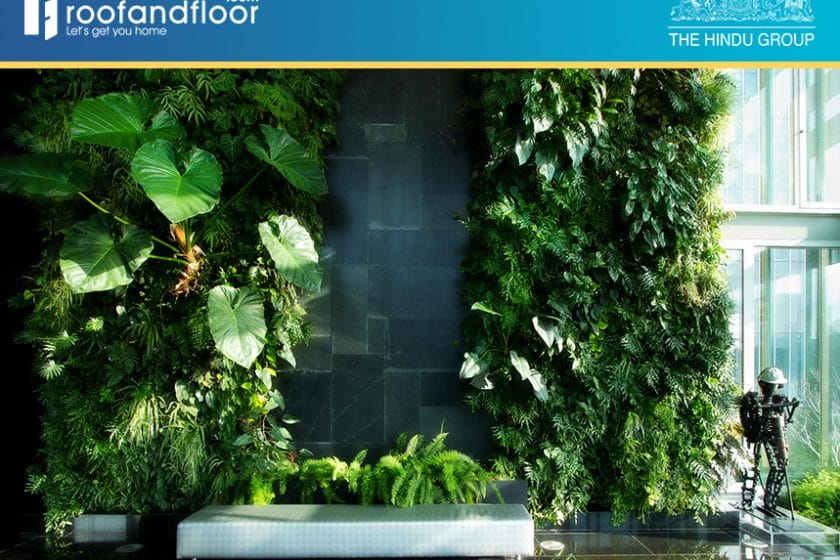Living in an apartment or a small house with practically no greenery around the neighbourhood and wishing for the wet smell of earth and fresh flowers? Though most greenery lovers are not averse to setting up small gardens in their balconies and terraces, some of them are not very successful due to lack of understanding about soil and water conditions required for different species. If you love to have a bit of natural beauty around you and are not above getting your hands dirty in the mud, then vertical gardens are the answer to all your needs.
Types of vertical garden structures:
- Gardens with plants growing upwards or horizontally
- Gardens with plants cascading downwards
- Gardens that allows you to keep multiple layers of plants above each other
Depending on the space available in a house, a vertical garden can be hung along a wall on a frame with planters, or tucked into pockets hung on a large sheet or canvas or felt and in several other innovative containers that are usually made of recycled wooden pallets or plastic and glass bottles.
Essentials of maintaining a vertical garden
While there are innumerable self-help books about setting up your own vertical garden through DIY containers and containers purchased from stores, there are some basic facts one needs to know to have a thriving vertical garden.
Shade factor
While a vertical garden can be kept both indoors and outdoors, it needs a certain amount of sunlight. So, place the plants in such a way that they do not receive sufficient sunlight without suffering from over exposure to the sun.
Select the right species
Besides succulents and ferns that are easy to procure and grow, you can also grow herbs, flowers, and vegetables but remember to select varieties that do not outgrow the structure they are placed in.
Garden environment
To own a flourishing vertical garden, select tropical plants along with succulents, as these are hardy species that do not require much water. Organic potting soil is best at retaining moisture. So, remember to enrich your plants with vegetable waste from the kitchen like vegetable peels and skin that is usually thrown away.
Irrigation
Irrigation at the right time is essential to maintain a lush vertical garden, and you can employ techniques like drip irrigation, recirculation or direct irrigation.
Height and strength of structure
While hanging baskets or planters from the roof or railing, check if the structure can support the weight of the plants as they grow and the branches of plants do not knock the head of people walking along the region.
Planter support during rough weather
You would not want a neighbour to complain that a favourite flower pot with colourful poppies hanging on your balcony has landed on their window after a strong gust of rain and wind, would you? For your safety and of others, remember to anchor the vertical garden structure secure to a railing or wall especially in high rise apartments.
The best advantage of putting together a vertical garden is that it can be done with simple DIY skills and does not require a large amount of money or expensive garden equipment.


